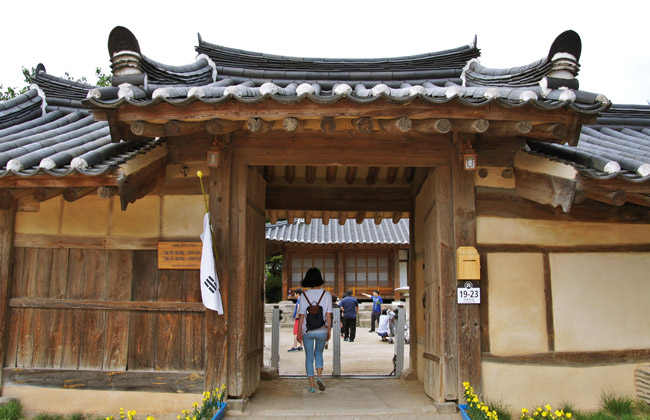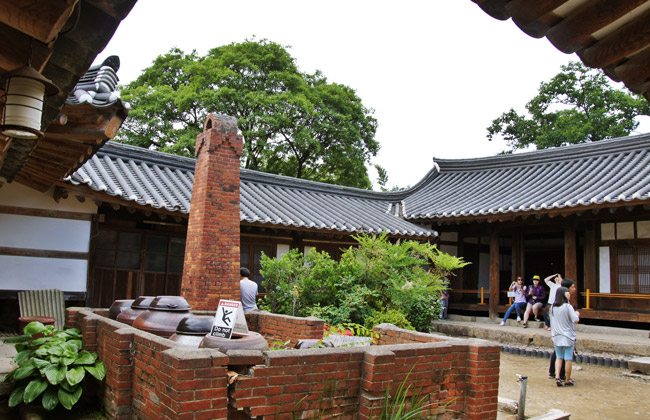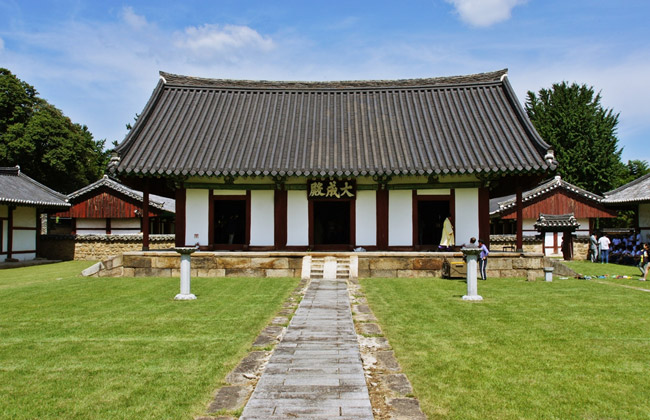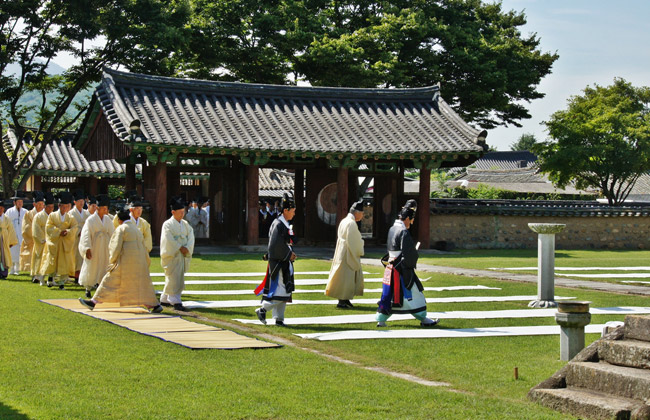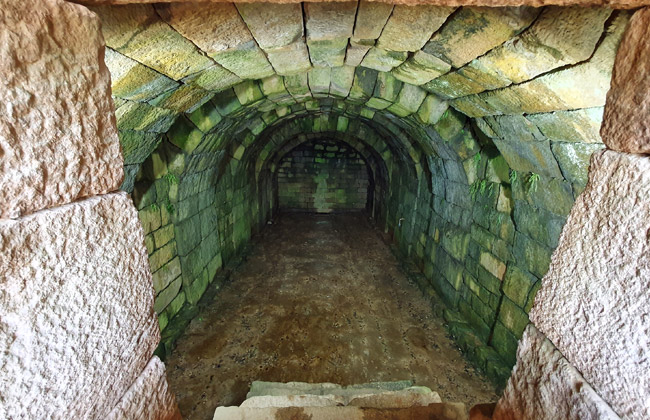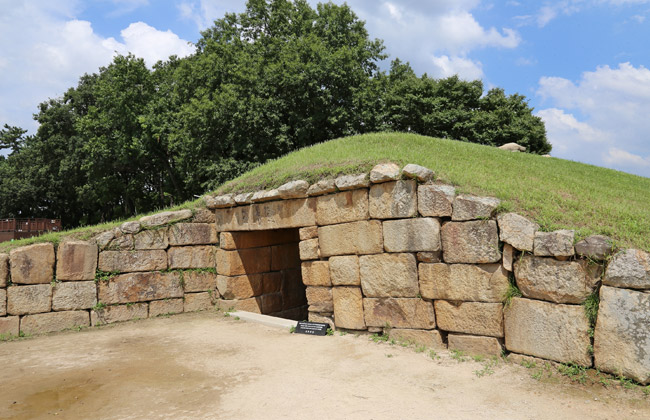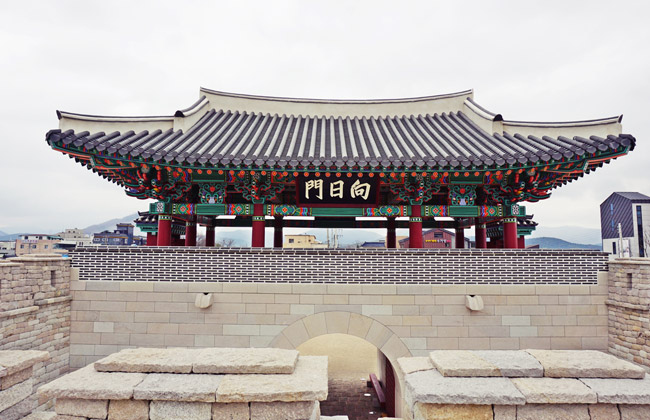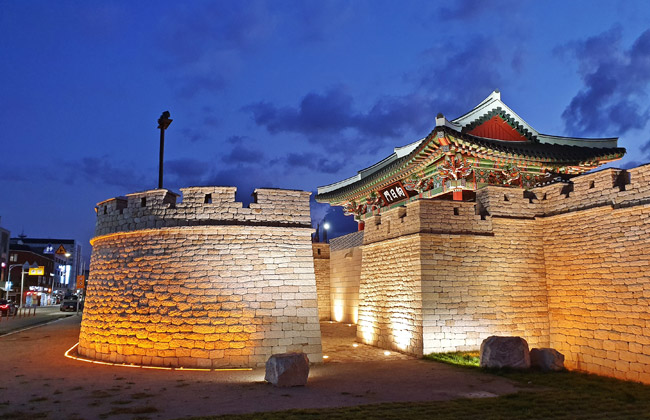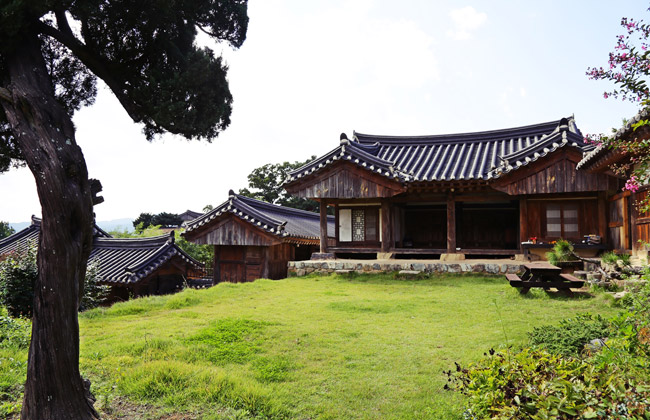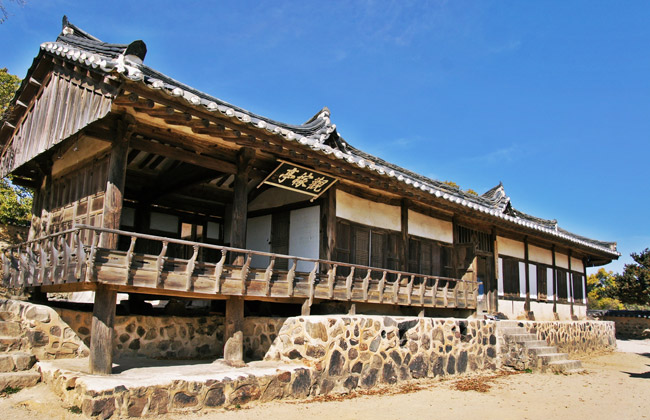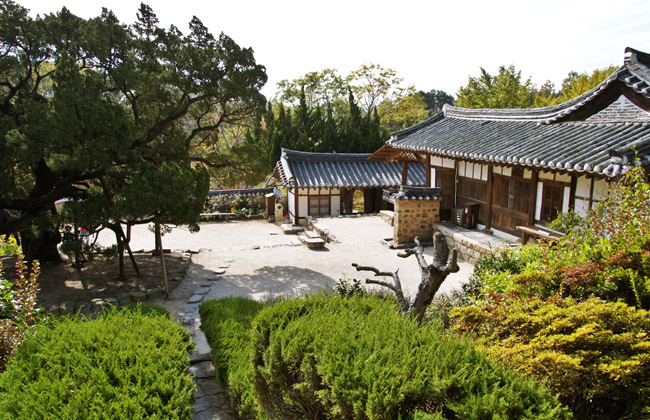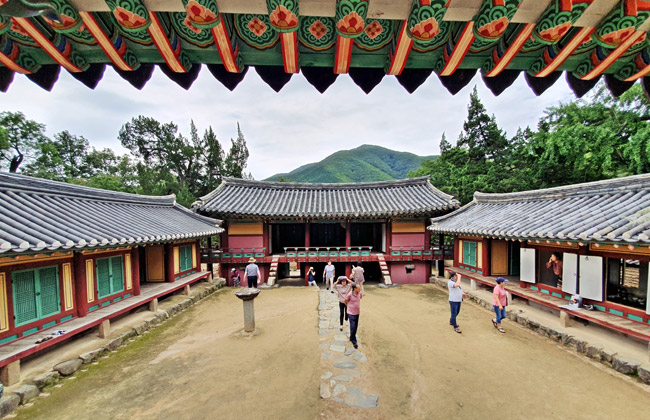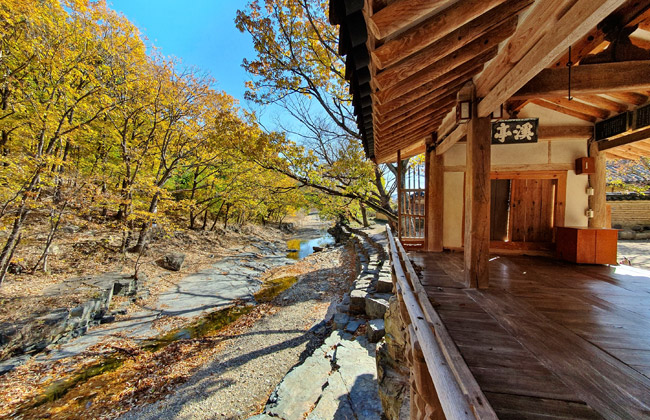Gyeongju Travel
Gyeonju during the Joseon Dynasty
한국관광의 메카 “Beautiful Gyeongju”가 여러분을 초대합니다.
- Evolution of Seorabeol to Donggyeong, then Gyeongju
- From the Three Kingdoms period to the Unified Silla period, Gyeongju served as the glorious capital city of a powerful kingdom for a thousand years. That’s why Gyeongju and Silla are synonymous when it comes to their respective history. Since the fall of Silla, however, Gyeongju spent another millennia building its own history. Seorabeol of Silla became Donggyeong of Goryeo, and then Gyeongju of Joseon. Throughout its different iterations, Gyeongju developed a unique culture. But today, Gyeongju stands as a melting pot of all three cultures. Wolseong Palace (royal palace) built during the Silla Dynasty became the Stone Ice Storage built during the Joseon Dynasty, and the site where Gukhak (national university) of Silla used to stand became the site of one of the best known Hyanggyo (academies) institutes during the Joseon Dynasty. It’s time to take a closer look at how Gyeongju evolved over the course of a millennia after Silla. Let’s take a trip to Gyeongju during the Joseon Dynasty.
-
Course Explanation
#GyeongjuDayTrip #GyeongjuofJoseonDynasty #GyeongjuMustseeCourse
This course connects heritage sites and relics from the Joseon Dynasty clustered in the downtown area of Gyeongju and those located in the northern end of the city. Except for a 20-30 minute ride from downtown Gyeongju to the northside, the destinations featured in this course are in close proximity of one another. We recommend you to take a tour around the city first, then move over to the northside. -
Recommended Course
#1Choe’s Old House in Gyeongju
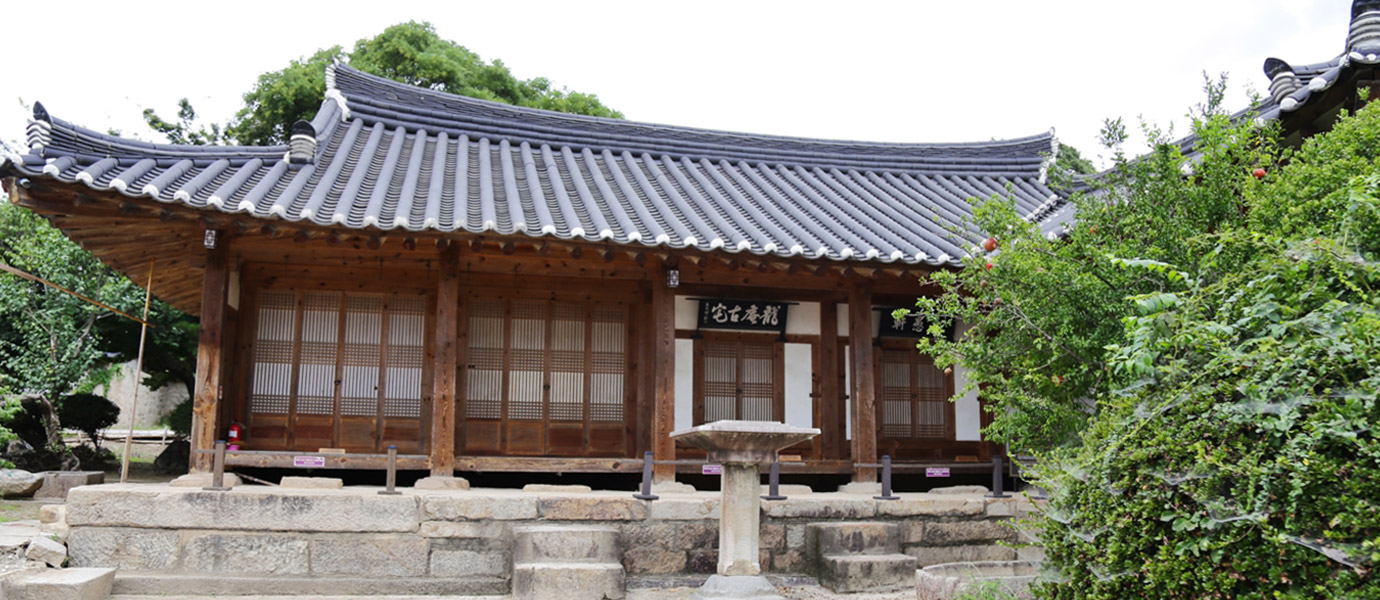
Choi the Wealthy was a prime example of Korean “noblesse oblige.” According to local folklore, the old house (built around 1700), was built three feet lower than the nearby Confucian school out of respect for Confucius and his teachings. Architecturally, the house was built in a style commonly seen in aristocratic houses during the Joseon Dynasty. Just like most aristocratic households, the original house had 99 rooms. Today, however, the main house, detached house (for men), tall gate (main gate), a storage room, and a few others structures are all that remain. The first thing that will catch your attention as you approach the house will be the tall gate, which looks much more dignified and understated than you would expect from such a grand aristocratic house. The gate is lower than some of the more extravagant houses from the times, giving it a modest and almost frugal look.
The Choi Clan, spanning several generations from General Choi Jin-rip (progenitor of the family) to Independence Movement activist Choi Jun (12th generation), was made famous by the virtue of their humility and tolerance. For nine generations, they produced officials of the “Jinsa” rank. Nevertheless, one of the Choi Clan’s family principles direct family members not to seek excess glory or wealth (known as the “Six Principles of the Choi Clan”). Under these Six Principles, Choi family members were: prohibited from pursuing any position beyond the rank of “Jinsa”; prohibited from amassing more than 10,000 burlaps of rice; required to treat passers-by generously; prohibited from amassing wealth after a bad harvest; and prohibited from allowing anyone within a 40km radius from starving to death.
Choe’s Old House in Gyeongju Information
- Location : 27-44 Gyocheon An-gil, Gyeongju
- Opening Hours : 09:00-18:00 (from 17:00 in the winter time)
- Entrance fee : Free
#2Gyeongju Hyanggyo(local Confucian school)

Right next to the Choe’s Old House in Gyeongju is Gyeongju Hyanggyo, an academic institution established during the Joseon Dynasty. Gyeongju Hyanggyo is the reason why the village earned the name Gyochon (“Education Village,” 校村), Gyori (“Education Township,” 校里), or Gyodong (“Education district,” 校洞) over the years. During the 2nd year of King Shinmun’s reign (682 CE) the king built the county’s first national university called Gukhak (National School). Later on, during the Goryeo Dynasty, Gukhak became Hyanghak (Confucian School), then Hyanggyo (Confucian Academy) during the Joseon Dynasty.
A Hyanggyo refers to an educational institution responsible for educating local talent. It’s equivalent to a modern public school. Meanwhile a Seowon is equivalent to a private school. During the Japanese Invasion of 1592, the Japanese burned the school to the ground. Fortunately, during the 33rd year of King Seonjo’s reign (1600 CE), the king began works to restore the Hyanggyo. The lecture hall and other buildings were fully restored to their original conditions by the 6th year of King Gwanghae’s reign (1614 CE). Every spring and autumn, Gyeongju Hyanggyo hosts a traditional Confucian ritual known as “Seokjeondaeje.” It also offers regular cultural programs reenacting traditional weddings between spring and autumn every year, and other traditional cultural activities such as tea ceremonies, archery, and Tuho (a traditional Korean game).
Gyeongju Hyanggyo Information
- Location : 17-1, Gyo-dong, Gyeongju
- Opening Hours : 09: 00-18: 00
- Entrance fee : Free
- Inquiries : 054 775 3624
- Website : http://www.hyanggyo.kr/
#3Gyeongju Seokbinggo
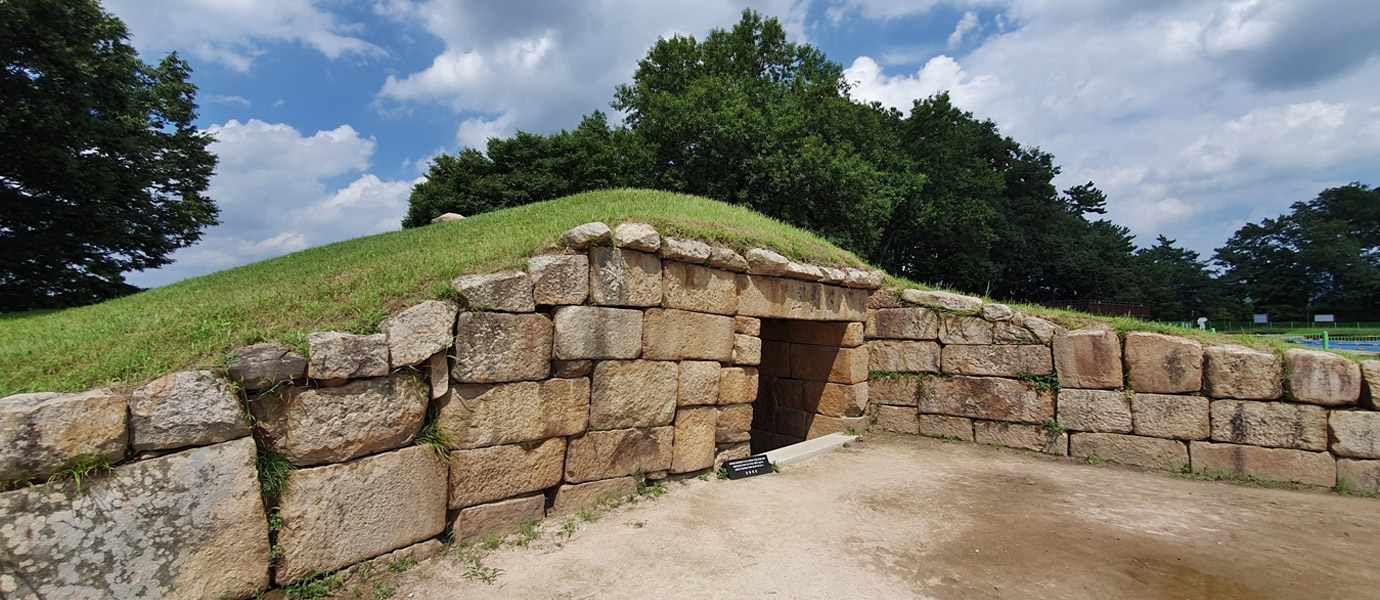
If you leave the Choe’s Old House in Gyeongju and theGyeongju Hyanggyo behind, and walk for 5 to 10 minutes, you’ll arrive at Wolseong. Located in the northern part of the Wolseong fortress is a natural refrigerator used during the Joseon Dynasty known as the Gyeongju Stone Ice Storage Facility (National Treasure no. 66). This ice storage facility, built using more than 1,000 pieces of stones, features rectangular stone chambers that face southwards and ceilings raised in a domed shape. The facility also has three ventilation ducts in the ceiling, and the floor has grooves that allow water to drain away from the ice.
The inscription (崇禎紀元後再辛酉秋八月移基改築) at the cornerstone of the facility’s entrance states that it was moved to its current location during the 17th year of King Yeongjo’s reign (1741 CE). Access to the inner chambers of the facility is prohibited, which means you have to look inside standing in front of the doorway. There, you’ll notice the cool air flowing out from the inner chambers. If you think about it, it truly is amazing the degree of sophistication our ancestors were able to achieve hundreds of years ago.
Seokbinggo Information
- Location : Inwang-dong, Gyeongju (Wolseong)
- Opening Hours : No fixed time
- Entrance fee : Free
#4Gyeongjueupseong Walled Town
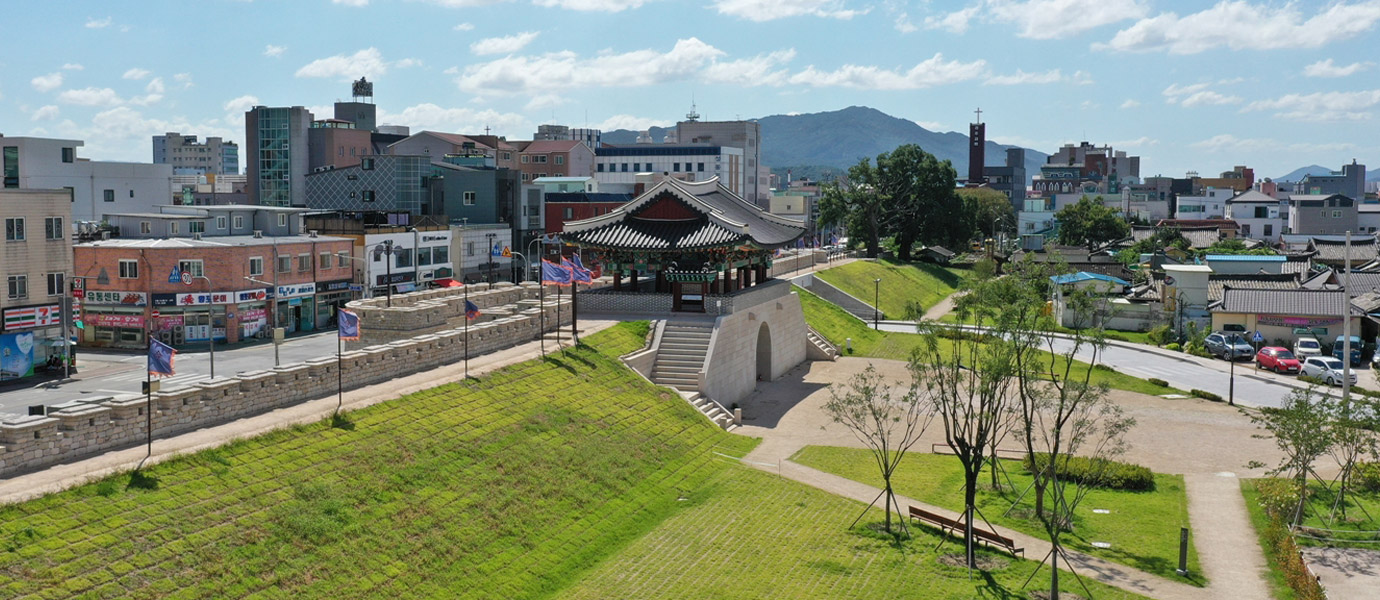
Before heading over to Angang, which is where Yangdong Village, the Oksan Confucian Academy, and Doknakdang Hall are located, there is one place you absolutely have to visit – the Gyeongjueupseong Walled Town. Even when Silla disappeared into the history books, Gyeongjueupseong Walled Town stood as a symbol of Gyeongju for another thousand years. While Wolseong was the main fortress for Gyeongju during the Silla Dynasty, Gyeongjueupseong Walled Town became the main fortress once the Goryeo and Joseon Dynasties began. It became the center of administration, daily life, and military functions of Gyeongju.
Originally built during the Goryeo Dynasty, records suggest the fortress was repaired and rebuilt several times during the Joseon Dynasty. The current iteration of the fortress was built in the 21st year of King Yeongjo’s reign during the Joseon Dynasty (1745 CE). Gyeongju At the time, Eupseong Fortress had a perimeter spanning 2.3km around the fortress, and the four great gates leading to the fortress from the north, south east, and west. All four gates were destroyed, but the eastern gate named Hyangilmun Gate was recently restored.
In November 2018, a restored 100m section of the east wall, bulwarks, and fortified castle gates along with the Hyangilmun Gate were unveiled to the public. There are further plans to rebuild the eastern wall, northern wall, and northern gate (known as the Gongshinmun Gate). The restored Hyangilmun Gate and connected wall have been set up with lights, and are quickly becoming very popular destination to visit in the evening. If you get a chance, take a look around the Fortress, then enjoy a cup of tea or coffee at one of the cute local cafés. You won’t regret it!
Gyeongjueupseong Walled Town Information
- Location : 31, Dongmun-ro, Gyeongju
- Opening Hours : No fixed time
- Entrance fee: Free
#5Yangdong Village
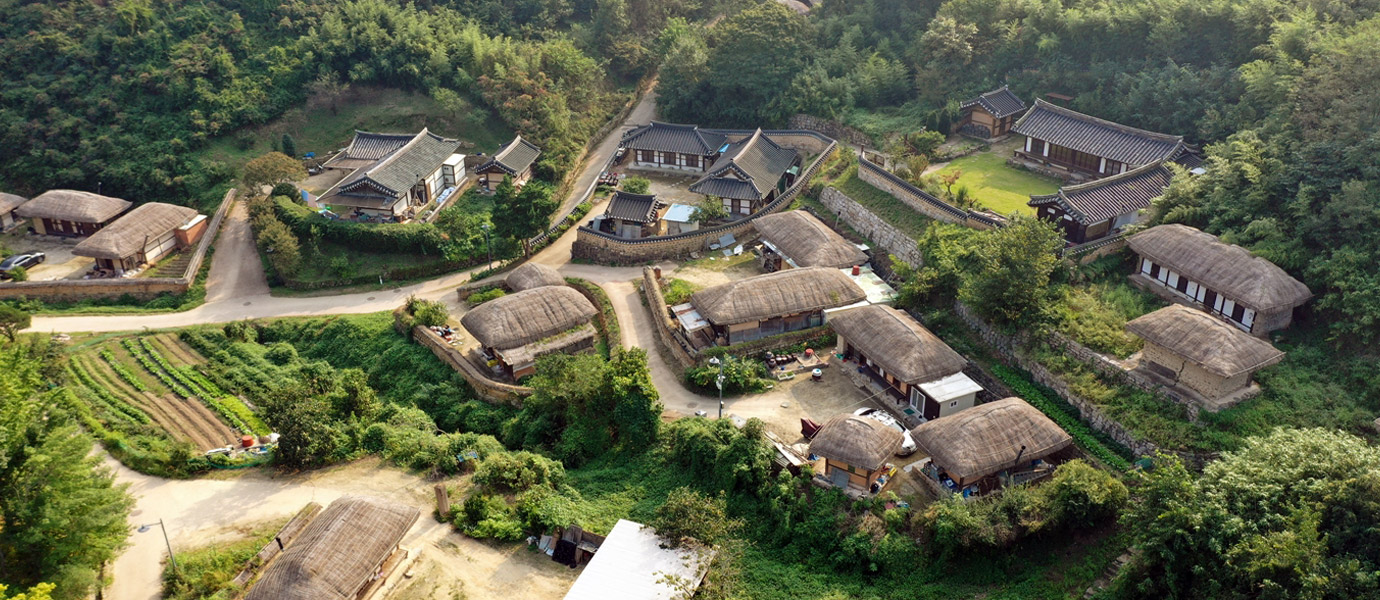
Just 20 to 30 minutes to the north of the city is an aristocratic village called Yangdong Village, which was established during the Joseon Dynasty. Particularly worth noting is the fact that Yangdong Village was listed together with Hahoe Village in Andong as World Cultural Heritage sites in August 2010. When you enter the village, the most prominent building you’ll notice is Hyangdan, a house granted by the king to Lee Eon-jeok (Literary name: Hwejae). Lee Eon-jeok was Yi Hwang’s master, and a scholar who established the foundation for Neo-Confucianism in Joseon. When the king granted him a new home, Lee Eon-jeok gave it to his younger brother (Lee Eon-gwal) who was taking care of their mother at the time. Hyangdan has drawn the attention of historians and architects for its unique structure and layout, which were all altered to make sure Lee Eon-jeok or his brother could get to their elderly mother’s quarters deep inside the house as quickly as possible. The pillars used to prop up the detached house are rounded columns used in temples and palaces, which were forbidden for private residences. Hyangdan, however, was able to use these rounded columns thanks to a special dispensation from the king.
A short walk from Hyangdan is Gwangajeong. In this house, Son Jungdon, who was famous as a righteous court official with unparalleled integrity at the time, set up a new branch of the Son family. The house is located on the village’s hill. From the porch of the detached house, you can get a nice view of the entire village. Next to Gwanganjeong is another hold house called the Mucheomdang. Known as the home of Lee Eon-jeok’s father, Mucheomdang is known to have great facilities for people to meet and talk to each other. Not far from Mucheomdang is the Songcheomjongtaek, the family home of the Son clan from Wokseong. This house has a plaque that reads “Seobaekdang” which is much better known than the name Songcheomjongtaek. Interestingly, the two most distinguished and talented men from Yangdong, Son Jungdon and Lee Eon-jeok, were both born in this house. At the front of the house, there is a beautiful and graceful Juniper tree which is believed to be as old as the house. There are also many other meaningful structures such as Gyeongsan Seodang, Sujoldang, and Shimsujeong across the village. Come and visit Yangdong Village. You’ll be surprised by the amount of detail and thought that went into each home!
Yangdong Village Information
- Location: 134, Yangdong Village-gil, Gangdong-myeon, Gyeongju
- Opening Hours: April ~ September 09: 00-19: 00 (From October to March 18: 00)
- Entrance Fee: Adults 4,000 won / Teenagers and soldiers 2,000 won / Children 1,500 won
- Inquiries : 054 762 2630
- Website : http://yangdong.invil.org
#6Oksan Confucian Academy
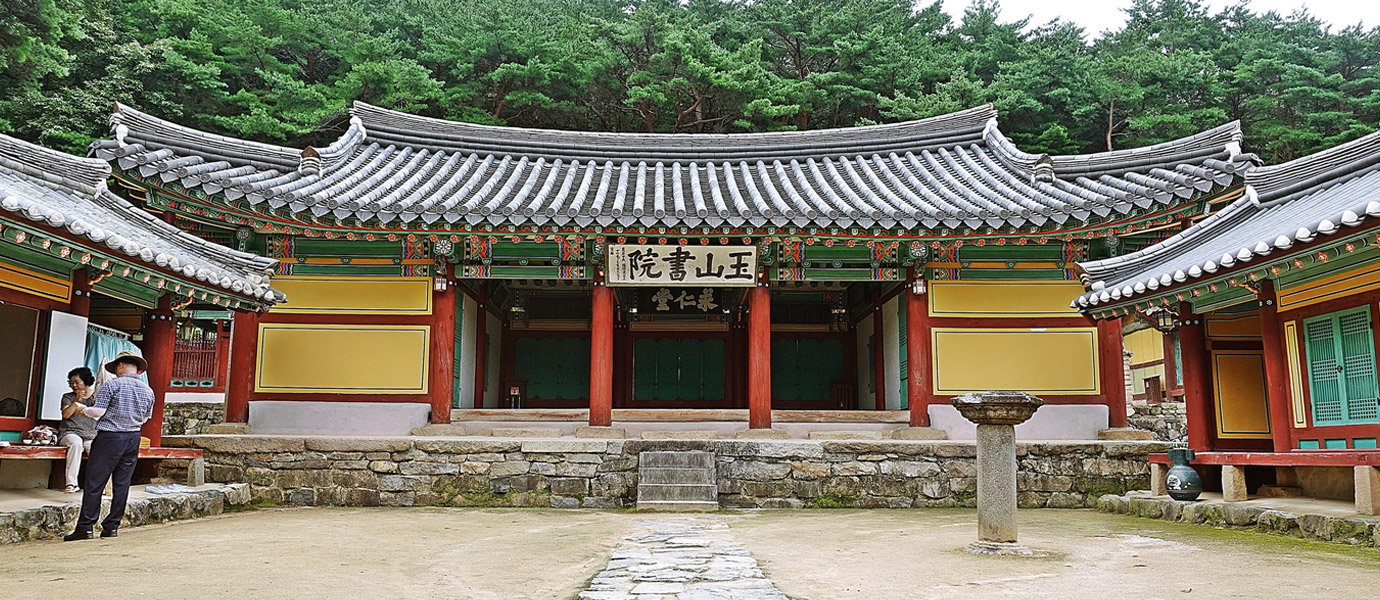
When passing through Yangdong village it is a great idea to stop by Oksan Confucian Academy and Doknakdang (both places are in the same neighborhood). Originally built to honor Lee Eon-jeok (a Joseon Dynasty scholar), the Academy was included among the nine Confucian Academies listed with UNESCO in July of 2019. If you enter through the Yeokrakmun Gate (main gate), you’ll see a pavilion called "Mubunru," this is the first example where an upper floor was included in the construction design of a Confucian Academy. In the front is the “Search for Benevolence Hall” (Guin Dang), while to the left and right sides are the Mingujae and Amsujae dormitory buildings. In terms of signboards, there are two Oksan Confucian Academy signboards - the one on the front of the auditorium was written by the famous calligrapher of Joseon Kim Jung-hee. Behind the lecture hall is a shrine where the ancestral tablet, memorial stone, and letters of Lee Eon-jeok are enshrined. Structurally speaking, experts say that the Academy has an orthodox structure with a place for learning at the front and worship at the back. Oksan Confucian Academy also offers a tea ceremony program from July to October as part of its cultural heritage initiative. So, come on over to Oksan Confucian Academy and enjoy its history with a cup of aromatic tea.
Oksan Confucian Academy Information
- Location : 216-27, Oksanseowon-gil, Angang-eup, Gyeongju-si
- Opening Hours : 10: 00-17: 00
- Entrance fee : Free
- Inquiries : 054 762 6567
- Cultural Tourism Commentary Time : 10:30-16:30
#7Doknakdang
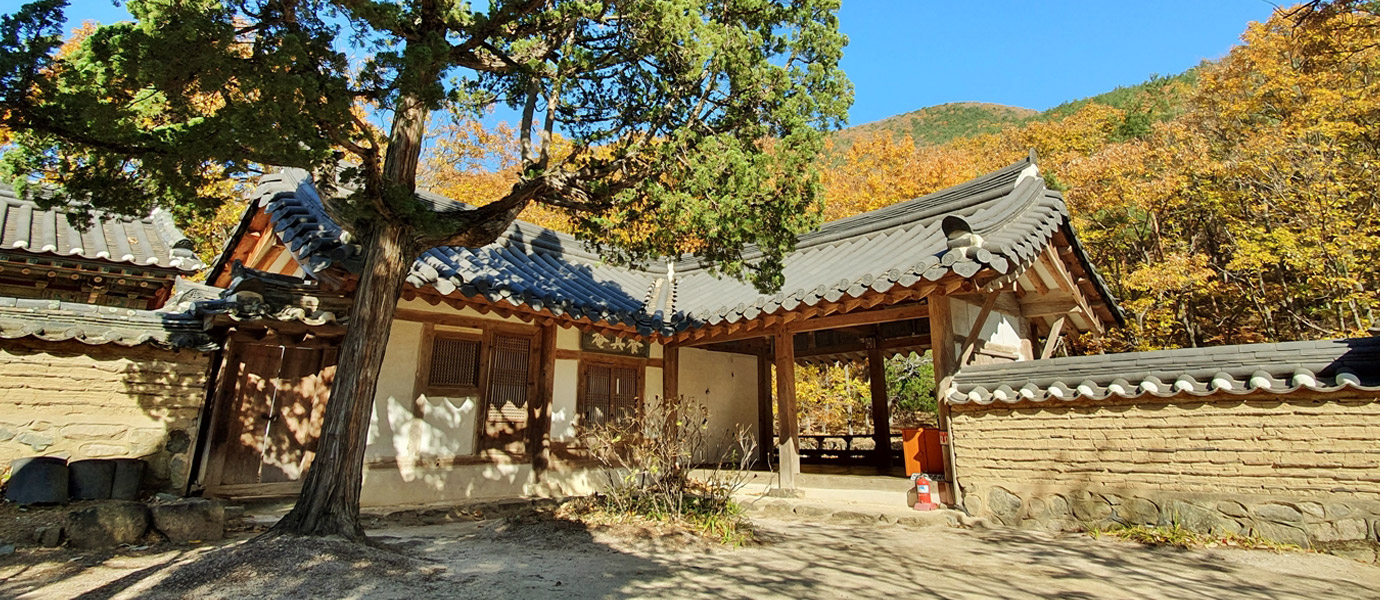
Doknakdang is the place where Lee Eon-jeok spent seven years after retiring from public service. Here, it is said Lee Eon-jeok was never lonely because he was at one with nature. Officially, the house is named Doknakdang, but some people refer to it as Oksanjeongsa. The signboard hanging at the front of the house was written by Yi Hwang and Lee San-hae. One particular interesting aspect of Doknakdang is its detached pavilion called “Gyejeong.” This pagoda looks out over the valley and offers a panoramic view of the area. The view is so surreal, it almost feels like a piece of traditional Korean painting. Another interesting feature is the lattice window incorporated into the wall separating the house from the valley. It’s a technique our ancestors used to enjoy the natural view of their surroundings from inside their homes. Doknakdang is available for accommodation. If you’re looking for an opportunity to relax in the bosom of nature, spending a night at Doknakdang may be the perfect option.
Doknakdang Information
- Location : 300-3, Oksanseowon-gil, Angang-eup, Gyeongju-si
- Opening Hours : No fixed time
- Entrance : Free
- Traditional Homestay Inquiries : 010 7620 7712
- Traditional Homestay Website : https://독락당.com/
